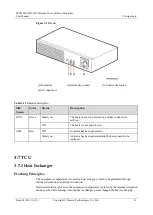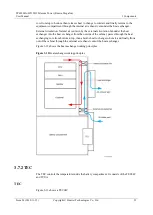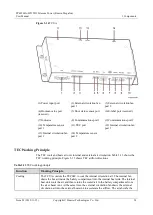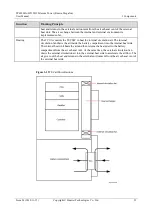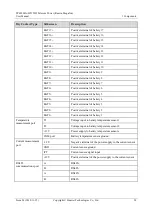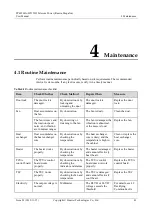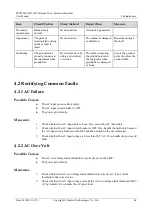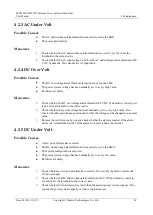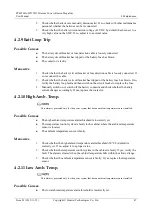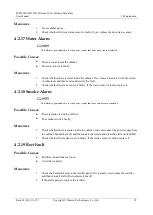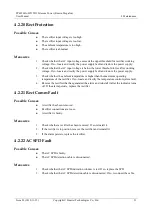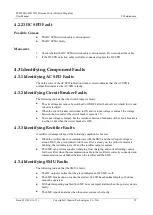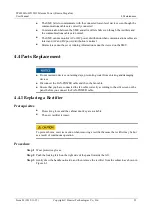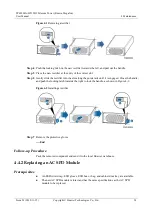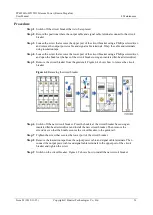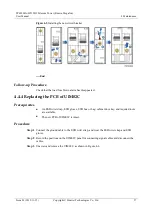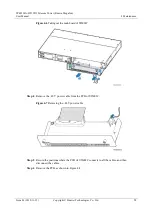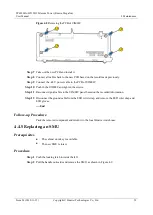
TP48200A-HT15D3 Telecom Power (Russia, Megafon)
User Manual
4 Maintenance
Issue 03 (2019-11-15)
Copyright © Huawei Technologies Co., Ltd.
45
4.2.3 AC Under Volt
Possible Causes
The AC undervoltage alarm threshold is incorrectly set on the SMU.
The power grid is faulty.
Measures
1.
Check whether the AC undervoltage alarm threshold is correctly set. If not, set the
threshold to the correct value.
2.
Check whether the AC input voltage is below the AC undervoltage alarm threshold (180
V AC by default). If so, handle the AC input fault.
4.2.4 DC Over Volt
Possible Causes
The DC overvoltage alarm threshold is incorrectly set on the SMU.
The power system voltage has been manually set to a very high value.
Rectifiers are faulty.
Measures
1.
Check whether the DC overvoltage alarm threshold (58 V DC by default) is correctly set.
If not, set the threshold to the correct value.
2.
Check whether the system voltage has been manually set to a very high value. If so,
check with other maintenance personnel whether the voltage can be changed to a normal
value.
3.
Remove the rectifiers one by one and check whether the alarm is cleared. If the alarm
still exists, reinstall the rectifier. If the alarm is cleared, replace the rectifier.
4.2.5 DC Under Volt
Possible Causes
An AC power failure has occurred.
The DC undervoltage alarm threshold is incorrectly set on the SMU.
The system configuration is incorrect.
The power system voltage has been manually set to a very low value.
Rectifiers are faulty.
Measures
1.
Check whether an AC power failure has occurred. If so, rectify the fault to restore the
AC power supply.
2.
Check whether the DC undervoltage alarm threshold (45 V DC by default) is correctly
set. If not, set the threshold to the correct value.
3.
Check whether the load current is greater than the present power system capacity. If so,
expand the power system capacity or reduce the load power.

